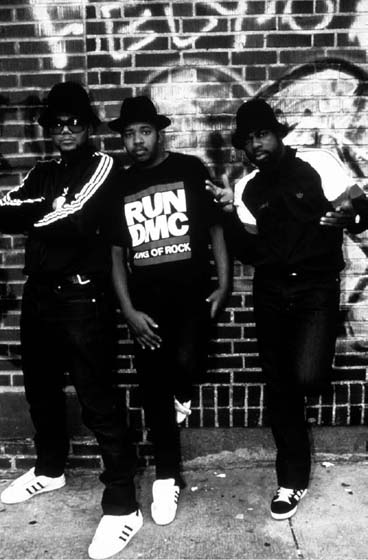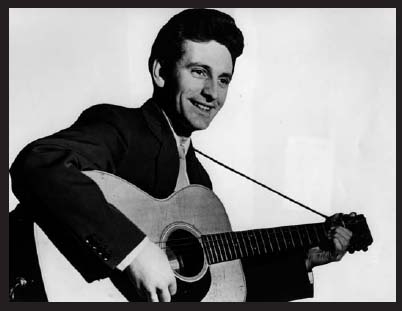The Encyclopedia of Dead Rock Stars (249 page)
Read The Encyclopedia of Dead Rock Stars Online
Authors: Jeremy Simmonds

OCTOBER
Friday 18
Steve MacDonald
(Quebec, 1971)
Gorguts

Don’t let the name fool you: Gorguts could claim to have catapulted death metal to stratospheric heights with their extraordinarily complex 1998 album
Obscura.
The French-Canadian band – formed by vocalist Luc Lemay and Sylvain Marcoux (guitar), Eric Giguere (bass) and Stephane Provencher (drums) – had been around for almost a decade before they released the record. When Provencher disappeared around 1993, Steve MacDonald replaced him but, always a troubled individual, the percussionist’s career with the band was fitful, to say the least. He had been battling bouts of severe depression long before his suicide in 2002. MacDonald was found hanged at his home, Gorguts ending as a band two years later.
Wednesday 30
DJ Jam Master Jay
(Jason Mizell - Queens, New York, 21 January 1965)
Run-DMC

Run-DMC were the rap act of the people – outwardly peaceful, good-humoured and keen to promote hip hop far beyond its racial and musical core. From the outset, Jam Master Jay – though not apparent in Run-DMC’s name – was a key figure.
Jason Mizell spent his entire life in Hollis, Queens, the three members of Run-DMC coming together in this neighbourhood around 1981. Leader Joseph ‘Run’ Simmons came through the ranks as a DJ with early rap success Kurtis Blow, pulling on board childhood buddy Darryl ‘DMC’ McDaniels and finally ‘DJ Jam Master Jay’ – the former garage bassist and drummer whose musical talents formed the backdrop to Run-DMC’s old-skool joints. In turn, the others adopted Jam Master’s black sweatsuits, Fedora and laceless Adidas sneakers, and the impact of the slick trio was immediate. In 1983, the group signed with Rush Productions – conveniently owned by Run’s brother, rap figurehead Russell Simmons – to release a hit album a year later that exposed Jay’s twin-deck skills to the public. Run-DMC really broke into the mainstream after their appearance at Live Aid (1985), but it was their triple-platinum third set,
Raising Hell
(1986), that pushed the group into the premier league. The chief catalyst for this was the reworking of the Aerosmith oldie ‘Walk This Way’, a Top Ten hit on both sides of the Atlantic – the first rap track to achieve this status in America and to break into the previously ‘safe’ MTV playlist.
Success at this level was not to be sustained over the next pair of albums – particularly in the wake of competition from the emerging West Coast gangsta scene – but, after a hiatus, the band once more found major success with a track from the vaults, this time their own ‘It’s Like That’ (1998), remixed by friend Jason Nevins. The record shot to number one in Britain within a week of release, easily the group’s biggest single, with sales of over a million. Mizell spent any down time there was wisely, setting up his own JMJ Records, which scored an instant hit with rap act Onyx: later, the label could boast 50 Cent as having been in their ranks as a novice. Like the other members of Run-DMC, Jay – who also opened an academy for budding MCs – developed a reputation for his encouragement of new talent in general. Sadly, this goodwill was to be exploited.

DMC, Run and Jam Master take their trainers for a workout
‘This is not a person who went out looking for trouble. He is known as a person that builds, creates and tries to make the right things happen.’
Dr Dre, the voice of the West Coast
After a well-received latest rap/rock fusion album,
Crown Royal
(2001), and a tour with old buddies Aerosmith, Jay took himself back to the studio. On the afternoon of 30 October 2002, he was working at Merrick Street, Queens, with a companion, Urieco Rincon, when two unnamed men were buzzed into the second-floor studio at around 7.30 pm. Details remain sketchy to this day, but what is undeniable is that a violent argument broke out in the studio’s lounge area, in the aftermath of which both Jay and Rincon were shot. The latter escaped with an injury to his ankle, but tragically, Jam Master Jay – who had publicly denounced the gangland culture he felt was killing rap as a genre – took a bullet in the head at pointblank range. He was dead before an ambulance could reach the building, by which time his assailants were long gone. Within the hour, local performances by top names including Russell Simmons and Big Daddy Kane were halted as news of Jay’s death reverberated around New York. No one could quite believe that the 37-year-old father of three, whose hip-hop battles had, it was thought,
always
been restricted to the grooves, had gone in such a manner.
Four years on, his murder is still enshrouded in mystery. Though Jay had been the victim of a shooting incident in the nineties, it was not believed to be connected with his death. Other unproven rumours suggested that he may have owed back taxes (which wouldn’t account for a shooting) or perhaps even drug money (which would). In 2003, it was then alleged that the incident might have had a direct connection with 50 Cent, who was said to have recorded a track taunting Murder Inc Records associate Kenneth McGriff over his drug convictions – a slur apparently punishable by death. When the former survived shooting in 2000 (to which he frequently refers in interview), Jay, having defied the boycott imposed upon 50 Cent by recording him, might thus have been shot in retaliation. (Three days after Jay’s death, 50 Cent promoter Kenneth Walker was found in his van on a New York backstreet having been shot eight times – though authorities were unsure whether this incident was in any way related.)
Run-DMC’s tributes to their DJ had already been set in place via the cuts ‘Jam Master Jay’, ‘Jay’s Game’ (both 1984) and ‘Peter Piper’ (1986), and these were among the many anthems played out as Jam Master Jay was laid to rest four days after his death. As his car rolled slowly along a packed Linden Avenue, Jay could be seen in stoic repose and decked out, as ever, in brand-new – and laceless – Adidas sneakers.

Lonnie Donegan: Long lost Lon
NOVEMBER
Golden Oldies #13
Lonnie Donegan
(Anthony James Donegan - Glasgow, 29 April 1931)

If his music may seem to some a touch pedestrian nowadays, ‘King of the Skiffle’ Lonnie Donegan was, to budding musicians such as John Lennon, once as cutting-edge as Eminem in his reinterpretation of black American styles.
In the pre-rock ‘n’ roll era, Donegan - who chose his name in homage to blues guitarist Lonnie Johnson - was the first to cross over with a Leadbelly tune (‘Rock Island Line’, 1956), going on to enjoy shedloads of UK hits including the number ones ‘Cumberland Gap’, ‘Gamblin’ Man’ (both 1957) and ‘My Old Man’s a Dustman’ (1960). Donegan’s passing from a long-term heart problem came on 3 November 2002 in nearby Peterborough while he was on tour in Nottingham. The news drew a flurry of tributes from the likes of Elton John, Paul McCartney, Van Morrison and Queen axeman Brian May.
Donegan cohorts Rick Hardy (guitar - d 2006) and Peter Hugget (bass - d 2009) have since passed away.
DECEMBER
Wednesday 4
Bernie Dwyer
(Manchester, 11 September 1940)
Freddie & The Dreamers

Another big fan of Lonnie Donegan was young Freddie Garrity, who began his own skiffle group – a predecessor to the chart-bothering Freddie & The Dreamers formed by the chirpy ex-milkman in 1960. The band – Garrity (vocals
g May 2006),
Derek Quinn (lead guitar), Roy Crewsdon (rhythm), Pete Birrell (bass) and Bernie Dwyer (drums) – were as much a comic turn as they were a musical act, their onstage dance routines more than competition for The Shadows’. The only non-dancer was drummer Dwyer, who deadpanned from the back as the frontman grinned through a series of major UK hits, including ‘If You Gotta Make a Fool of Somebody’, ‘I’m Telling You Now’ (a US number one two years later) and ‘You Were Made for Me’ (all 1963). As with many of the era’s pop acts, success was to be shortlived for The Dreamers; they were reduced to performing on children’s TV by the early seventies. Bernie Dwyer had left the music business behind some decades before his death from lung cancer.